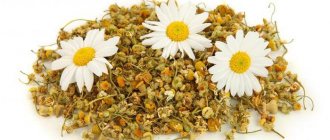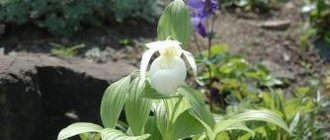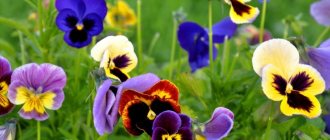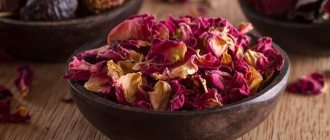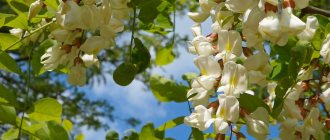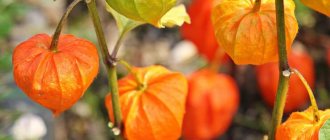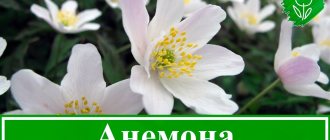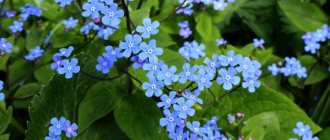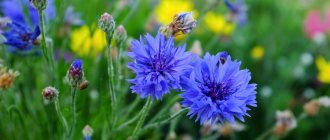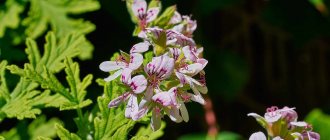Anemones or anemones are a very extensive genus of plants, containing about 160 species that have fundamental differences from each other. Among them there are spring- and autumn-flowering species, with tubers and rhizomes. The colors and structure of flowers can also be quite varied. Oak anemone is a flower that symbolizes the arrival of spring and is distinguished by its unpretentiousness in cultivation and charming appearance.
Oak anemone, photo, description, properties, treatment.
Oak anemone (Anemone nemorosa).
Description. Perennial herbaceous plant of the Buttercup family (Ranunculaceae). It has a horizontal, cylindrical, smooth rhizome that branches and grows quickly. Thanks to this, the plant forms dense thickets. The stem is erect, sparsely pubescent, 10-25 cm high. The leaves are three times dissected. The basal leaf is single (or not at all) long-petiolate. Stem leaves on short petioles, collected three in a ring. Peduncles are solitary with one flower at the end. The flowers are white, light pink or purple, usually with six (maybe 7 or ovate petals, 20-30 mm in diameter. Blooms in April - May. Fruit ripens in June. The fruit is an oblong, short-haired achene with numerous seeds. Anemone oak grove prefers shady areas with loose fertile soil. Grows in forests (mostly broad-leaved), among shrubs. Reproduces vegetatively and by seeds. The plant is common in Western Europe, the Mediterranean, in the forest zone of the European part of Russia. There are about 150 species of anemone. Most species of this plant have when the wind blows, the petals fall off easily. The most common types are oakwood, forest, and buttercup. The plant is poisonous!
Collection and preparation of raw materials. For medicinal purposes, the herb of anemone is used and harvested. Harvesting is carried out during flowering. Cut off the stems with leaves and flowers. In this case, it is necessary to work with gloves, since contact with the plant may cause local skin irritation. The collected anemone herb is dried outdoors in the shade. Dryers can be used to dry at temperatures up to 40°C. The finished raw materials are stored in closed glass jars. Shelf life: 1 year. Composition of the plant. The herb anemone contains anemone, saponins, ascorbic acid, chelidonic acid, resins, tannins.
Useful properties, application, treatment. Preparations of anemone have anti-inflammatory, bactericidal, antifungal, expectorant, diaphoretic, analgesic, and antitumor properties. In folk medicine, preparations of this plant in the form of an infusion are taken orally for the treatment of pneumonia, heart diseases, stomach pain, migraines, sexual weakness of men and women, and malignant neoplasms. Externally used for rheumatism, gout, and for the treatment of dermatoses.
Dosage forms and doses. Cold infusion. 2 teaspoons of dry crushed anemone herb per 250 ml of cool boiled water, infuse for 20 hours, filter. 2 tbsp. spoons take 3 rubles. in a day. This infusion is also used for compresses (rheumatism, gout), lotions and washes (dermatoses, poorly healing wounds). Contraindications. An infusion of oak anemone should not be taken by pregnant women (it has an abortifacient effect), during lactation, and is not recommended for kidney inflammation. Since the plant is poisonous, to avoid poisoning you should follow the dosage and be attentive to your well-being.
Anemones in our gardens
Wild perennial anemones are confidently gaining their place in gardens. Not only the delicate flowers look impressive, but also the carved leaves of this herbaceous plant.
They are a sophisticated decoration for:
- borders located near ornamental shrubs;
- small flower beds that are located under fruit trees;
- garden slides.
A harmonious neighborhood of transplanted wild perennial anemones with small varieties of bulbous plants, pansies, and various primroses. For open ground, oak anemone is a very successful herbaceous plant, due to the ability of its rhizome to spread over a large space in a relatively short time.
Plantations of oak anemone successfully develop in conditions similar to natural ones; planting and caring for perennial plants is not at all difficult. A little shade in summer and showers of sunshine in spring. Usually, for propagation of wild anemones, only pieces of rhizome with buds are taken.
It should be planted to a depth of 8-10 cm in July or August, when the above-ground part of this perennial herbaceous plant has already died off. Oak anemone is frost-resistant, ideal for open ground because it does not require shelter for the winter. Although the flower buds that form on the rhizomes in the fall may be damaged by severe frosts.
It must be emphasized that planting and caring for the numerous garden forms of anemone that have been bred by breeders are almost no different from the care of growing transplanted wild plants.
- Choose an area rich in humus, with slightly acidic or alkaline loose fertile soil;
- Sometimes a little sand is added to the soil, so it becomes more water- and breathable;
- Particular attention is paid to proper watering: the ground where anemones grow should be moist, but without stagnant water;
- The ideal solution is mulching with leaves of fruit trees;
- Anemone responds gratefully with abundant flowering to fertilizing.
Comment! It is necessary to distinguish other beautifully flowering species of anemone from anemone nemorosa (anemone).
Nowadays, plants are popular with petals of different colors, in which the underground part is nodules, not rhizomes. The conditions for planting and caring for them are somewhat different.
The Vestal oak anemone has a special charm. Its exclusive, large, snow-white porcelain flowers are 6 cm in diameter. The main advantage is a terry raised pompom in the center of the flower, which is formed from narrow petals. Surrounded by lacy leaves, the fluffy flowers of the Vestal anemone make an indelible impression of beauty and grace. The flowering period of this perennial herbaceous plant under appropriate planting and care conditions can reach two weeks.
Anemone (anemone) oak forest
Oak anemone , or, as it is also called, anemone, is a plant that is often used in medicine as a cure for a number of diseases. The flower is gradually disappearing in nature, so it was listed in the Red Book. This is due to the fact that it has wonderful decorative qualities, which is why it is often torn down. And since the flower is very fragile, after it is picked, the root system also collapses. It resembles a snowdrop, as it looks very delicate and cute and sways even with the slightest breath of wind. It begins to bloom in early spring and is a sign of the beginning of real warmth. Further in the article we will take a closer look at the oak anemone, provide a description of the external characteristics with photos and tell you how to grow this wonderful spring flower at home.
Review of the best varieties
Today, in the wild, the oak anemone is under threat of complete extinction, so you cannot dig up its plantings in the forest with rhizomes in order to plant it in your dacha. You can decorate the area with this flower in another way - buy seeds in the store and plant them. Anemone is represented by various species, since breeders have successfully managed to develop unusual varieties with double and simple flowers in light pink, blue and white colors. The best plant varieties include the following.
In addition, lovers of unusual garden curiosities can purchase such amazing varieties as Monstrosa, Viridiformis, Virescens. Unlike ordinary plant varieties, these flowers have exotic green buds. Since anemone is represented by a huge variety, when choosing a particular variety, it is important to take into account its growing conditions and certain care requirements.
Botanical description
Anemone has a straight stem that can grow up to 20 cm in height. The leaves are divided into three parts. A single white flower is formed at the end of the stem; sometimes pink and light lilac shades can also be found.
Anemone flowers usually have six petals. Flowering begins around April and lasts until May. In June, a fruit is formed that has many seeds inside the seed pod.
Today there are many varieties of oak anemone known that can be grown in home gardens. You can decorate lawns and flower beds with these flowers.
Article on the topic: Chickweed - useful properties, description
Some varieties are distinguished by semi-double and double flowers. The buds can be purple, blue and even red. If you provide the plant with decent care, it can bloom already in the third year of growth in a new place.
If you do not disturb the plant, it will create large, beautiful flower thickets. In the first ten days of summer, the part located above the ground dies off.
Reproduction methods
Anemone Dubravnaya is an ephemeroid. After the seeds ripen, the green part dries out. As a rule, this happens in the first half of summer. Anemone produces abundant self-seeding, and insects carry seeds over long distances. The germination rate of the seed is low, about 20%. For a plant to gain strength, build up a powerful system and bloom, at least 10 years must pass.
The herbaceous plant Dubravnaya anemone, which is intended for open ground, is best propagated vegetatively by dividing the bush. To do this, in July the bush is carefully dug up and divided into parts. Each division should have a well-developed root system and healthy shoots without mechanical damage.
Habitats
The wood anemone plant lives in the forest zone of the Mediterranean, Western Europe and the European part of Russia.
The anemone is distributed in broad-leaved forest types; it is less common in spruce-broad-leaved forests. If a flower was seen in a spruce forest, then this will be evidence that oak trees previously grew here, which were later replaced by spruce trees.
Choosing a place to grow
For cultivation of an artificial form, anemone is attractive for its external characteristics, as well as the period and duration of flowering. The flower gives its beauty when the rest of the ornamental plants in the garden are just waking up after wintering.
In addition, the anemone is perennial, which allows it to delight the gardener’s eye for ten years, or even longer. A very pleasant addition is also the fact that anemone is resistant to diseases and pests. The latter is due to the fact that the flower is poisonous and is not to the taste of harmful bugs and various insects.
The oak anemone flower prefers light, but slightly shaded areas of the garden. You should not expose it to scorching direct sunlight. The best option would be a place under the wide crowns of trees.
It is advisable to provide the soil with a sandy type, moist and humus. In this case, the soil should be kept moist throughout the season, even after the upper part of the plant dies. Also, the soil should be loose and fertile.
Planting anemone
At home, growing anemone from seeds will be quite difficult. So it is better to resort to the method of dividing the bush. After digging, the bushes will be well divided into parts. Division should be done in July, when not all the leaves have completely died off.
When planting, there is no need to unnecessarily deepen the flowers into the soil; a depth of about 5 cm is suitable, maximum —
8-10 cm. It’s not worth watering the plants now either.
Also, when planting anemones, you need to ensure that the root collar is located at ground level. Anemone usually takes root quite easily in a new area.
If it was decided to sow seeds, then it is advisable to do this before winter.
Spring sowing is also allowed, but only with preliminary cold stratification. The first seedlings can be seen within 15-20 days. Seedlings will be able to flower in the second year.
Preparing to plant anemones
How to prepare the soil
Before you start planting an anemone, you should find the most suitable area and prepare the soil. A suitable area should be spacious, in partial shade and protected from drafts. Strongly growing rhizomes are very fragile; even contact can harm them. In addition, these flowers can be damaged by excessive heat, as well as drafts. The soil should be loose, nutritious and well drained. The best option is deciduous soil or loam with peat. To keep the soil loose, regular sand should be poured into it. If the soil is acidic, this can be corrected by adding wood ash or dolomite flour.
How to prepare seeds
When growing anemones from seeds, you must remember that they have extremely low germination rates. About ¼ of the seeds will be able to germinate, but they must be freshly harvested. To increase the percentage of seed germination, they must be stratified; they are placed in a cold place for 4–8 weeks. To do this, combine the seeds with peat or coarse sand (1:3), the mixture must be moistened abundantly. Then it is sprayed with water every day to keep it moist all the time. After the seeds have swelled, they must be combined with a small amount of substrate, everything is thoroughly mixed and sprayed generously with water. Then the seeds are removed to a well-ventilated room, where it should not be warmer than 5 degrees. A few days after the sprouts appear, the bowl with the seeds must be transferred to the yard, where it is buried in the snow or soil, and the surface is sprinkled with straw or sawdust. At the very beginning of spring, transplant the seeds into boxes so that they germinate. If you don’t want to bother too much with growing anemones, then in the autumn, sow the seeds in containers filled with loose soil. The boxes should then be buried in the yard, with the top covered with cut branches. In winter, they will undergo natural stratification. In spring, the seeds should be removed from the soil and planted.
Preparing anemone tubers
Before planting anemone tubers, they should be awakened from sleep. To do this, they are immersed in lukewarm water for several hours to swell. Then they are planted in pots filled with a moistened substrate consisting of sand and peat; they need to be buried only 50 mm. The substrate in pots must be provided with systematic moderate moisture. Also, before planting, the tubers can be “soaked”; for this they are wrapped in a cloth, which is generously moistened with a solution of epin and placed in a polyethylene bag, where they must remain for 6 hours. Tubers prepared in this way can be immediately planted in open soil.
Anemones (anemone) - planting tubers
Watch this video on YouTube
Features of care
Caring for this forest plant, listed in the Red Book, is very simple.
First of all, we should talk about watering. It is very important to moisten the soil under the plant during the period when active growth of flowers occurs, as well as their budding.
In this case, weeding should not be carried out, because the roots of the anemone are very close to the surface. Weeds should be removed after the water is completely absorbed into the soil; this should only be done manually and with extreme caution.
It is also worth knowing that anemones are quite drought-resistant, so if the gardener does not have the opportunity to water the flowers on his own, they may well have enough moisture from precipitation.
Plants will need to be fed with fertilizers only one to two years after planting. In this case, the use of manure is unacceptable, since it will be destructive for the anemones.
Organic fertilizers in liquid form are best. They should be added at the stage of flower budding.
As for complex mineral fertilizers, they are introduced already at the flowering stage of the anemone. But it is also impossible to “overfeed” the flowers, since in this case they will lose their buds.
For the winter, it is better to dig up the anemone and place it in containers with moistened sand or peat. Such boxes should be stored in a dark and slightly cool place, for example, in a basement or cellar.
Peat or sand will need to be watered from time to time so that the plant tubers do not dry out. If you do not plan to dig up the cultivated plants, then they will need to be sprinkled with sand, peat and compost, and additionally covered with leaves on top.
In early spring, you can construct a kind of greenhouse over the site, which will help stimulate the growth of new shoots.
How to plant anemone tubers
Following the rules specified in the article, even a novice gardener can cope with planting anemone tubers. First, you need to decide on the timing of planting, prepare planting material, containers and soil.
When to Plant Anemone Tubers
Anemone tubers should be planted in open ground in the spring, after the soil has warmed up sufficiently. However, in this case, the opening of the tuberous anemone buds should be expected only in mid or late summer. In order for the buds to form earlier, planting material is planted in peat pots in advance, before the onset of spring, and kept in a cool room.
The exact time for planting in open ground varies depending on the region and variety of tuberous anemone. As a rule, the optimal temperature for a flower is a stable temperature of 9 - 12 degrees. Reducing it slows down the rate of rooting, and increasing it negatively affects the development of the young plant.
Selection of container and soil preparation
For planting tuberous anemones, it is not recommended to use the usual plastic and plastic containers, since in this case, during transplantation into open ground, they will need to be removed from it, which can lead to damage to the root system of young plants.
For tuberous anemone, peat pots are ideal as containers, which can be placed directly into the soil with germinated seedlings when planting.
The next step is to prepare the soil for the tuberous anemone; ideally it should be loose and alkaline. You can acidify it by adding ash or dolomite flour.
Soaking anemone tubers
Before growing anemones from tubers, it is necessary to awaken them from sleep by saturating them with moisture. However, it is not recommended to completely immerse them in water. In this case, they will absorb too much liquid and may subsequently rot.
Landing rules
Experienced gardeners recommend planting tuberous anemones in two stages, in the first of which germination of planting material occurs, and in the second - growing.
After soaking, pour a small amount of pre-prepared soil into any shallow container, lightly moisten it and lay the tubers on the surface. The container is covered with film or glass and kept at a cool temperature (about 5 degrees), keeping the soil moist. After 8 - 12 days, the first roots and growth points begin to appear. They determine the side on which the tuber is placed in the ground.
After a small sprout hatches, you can begin growing the tuberous anemone in peat pots. If the sprouts have not appeared after the allotted time, the soil substrate continues to be moistened as it dries, being careful not to overdo it. If the tubers have not rotted, they should definitely germinate within another week.
How to care for anemones in pots
The recommended temperature for keeping seedlings is about 12 degrees. High temperatures make the sprouts weak and can cause them to rot. After complete rooting, the increase in temperature ceases to pose a danger to plants.
Further care for tuberous anemone includes moderate regular watering without waterlogging as the soil mixture dries out. In the early stages, the plant does not need feeding.
Beneficial features
Due to the fact that oak anemone contains a large amount of vitamin C, saponin, alkaloids, organic acids and other elements, the plant has many healing properties.
- Antifungal . Can have a detrimental effect on various fungal formations.
- Sedative. Calms and also has an antispasmodic effect.
- Painkiller. Relieves or reduces pain.
- Expectorant. Reduces the viscosity of sputum and helps their rapid removal.
- Bactericidal. Can neutralize the action of organisms that cause various types of infectious diseases.
- Sweatshop . Increases the body's ability to remove salts and toxins.
Article on the topic: Common sedge - beneficial properties, description
Based on the various healing characteristics of anemones, they are included in medicines for migraines, eczema, rheumatism, dermatitis, purulent wounds, gout, as well as sexual weakness in women and men.
But it is important to remember that in their pure form, anemones are poisonous! You should use preparations that contain this plant, as well as use anemone tinctures only after consulting a doctor and only in limited quantities.
Anemone for further use is collected at the stage of its flowering, after which it is dried in a shaded area at temperature conditions not exceeding 40°C. After this, the dried plant can be stored for no longer than a year in glass jars.
The oak anemone is considered a harbinger of real spring. It is delicate and fragile, but at the same time very loved by many gardeners. It does not require special care, so even an amateur gardener can grow it on his own plot.
Tuber preparation
If you decide to plant anemone flowers on your site using tubers, you will first need to bring the plants out of dormancy. Caring for and planting anemone flowers (there is a photo in the section) is carried out in special containers. To do this, first pour a little water into the pot, then place the tubers there for several hours to swell. As soon as the first signs of an increase in the size of the planting material appear, it is necessary to pour the water out of the pots, place a sand-peat mixture in them and plant the tubers there. Bury them no more than 5 centimeters from the surface. When the operation is completed, all that remains is to keep the substrate moist.
There is also another way to prepare anemone tubers for planting:
- We take some fabric and moisten it in the Epin solution, after which we place the roots of the anemone into it.
- After this, we wrap the tubers in a plastic bag and leave them in this state for five to six hours.
- As soon as the specified time has passed, it is allowed to plant the plant in open ground or pots.
If you properly prepare the material for planting, then over time you will grow large and beautiful flowers, which will have excellent decorative characteristics and a charming aroma.
Anemone dubravnaya: photo and description
The wood anemone plant is a forest flower common in Western Europe; it also grows in the Mediterranean region. Its Latin name is Anemone nemorosa, and its common name is buttercup. The flower actually belongs to the Ranunculaceae family and has many of the medicinal properties inherent in these plants.
City dwellers who find themselves in nature often mistake it for a snowdrop, since the oak anemone, a photo of which can easily be seen in any botanical reference book, blooms at the very beginning of spring. The similarity with snowdrops is also due to the white color of the inner surfaces of the petals. Their outer part has pinkish, purple, and sometimes red hues, depending on the composition of the soil.
Disease and pest control
A unique feature of the herbaceous crop is its high resistance to most diseases of a bacterial and fungal nature. But not everything is so perfect. The plant often suffers from invasions of nematodes and slugs. Compliance with the rules of agricultural technology described above will help prevent the appearance of pests.
If it was not possible to avoid insect infestation, use the drug “Fitoverm 2%”. Slugs are picked by hand. Sometimes mechanical methods of combating parasitic individuals are no less effective.
Brief description of the flower
These are small, very lush herbaceous bushes, 10-25 cm high. The plant is strewn with dissected curly leaves and many flowers. However, its flowering itself is single. That is, only one white flower blooms on each peduncle. They can reach from 2 to 6.5 cm in diameter, depending on the conditions surrounding the plant. There can be 6 or 8 petals.
The rhizome is similar in structure to most buttercups. That is, it has a cylindrical, slightly thickened shape and is located horizontally, close to the surface of the soil layer.
Anemone blooms already at the end of April, and in warm weather even earlier. Flowering lasts until mid-May, if the weather is cool, then until early June. After flowering ends, the seeds ripen within 1-1.5 months.
How is a flower useful in nature?
Like many wild plants, anemone is used in folk medicine formulations. It is a source of nectar and pollen collected by bees. This flower is no exception; its value as a honey plant is quite high.
Anemone nectar contains the entire spectrum of honey-bearing substances:
- sucrose;
- glucose;
- fructose;
- maltose;
- aspartic, glutamic and other acids;
- alcohols;
- mineral and aromatic compounds.
Flower nectar is the main food of many insects, for example, wasps, bumblebees, butterflies and, of course, bees. Ants, as well as small forest birds and even bats, also feed on it.
Caring for anemone in the ground
Caring for tuberous anemone in the ground is simple. Timely application of fertilizing is the key to lush and abundant flowering. During the formation of buds, the plant needs organic fertilizing, and in the fall - complex mineral fertilizers. If all the necessary fertilizers were added to the soil during planting, additional fertilizing is not necessary.
Watering
In spring, the tuberous anemone is watered once a week. In hot and dry summer weather, it is recommended to water daily, early in the morning and in the evenings after sunset. If the summer turns out to be rainy, watering is reduced, based on soil moisture. The main thing is to remember that waterlogging, like drought, is detrimental to the plant.
Loosening and weeding
Since tuberous anemones have a shallow root system, loosening the soil around them with a hoe or flat cutter is strictly prohibited, so weeding is done by hand. To ensure that fewer weeds grow around the plants, the soil around can be mulched with a layer of peat or dry mullein.
What are the benefits of a flower for humans?
Anemone is a medicinal raw material for the preparation of a large number of traditional medicines. Among the healing properties of this plant, the following are most relevant:
- bactericidal;
- expectorants;
- anti-inflammatory;
- antitumor;
- painkillers;
- sweatshops;
- antipyretics;
- antifungal and antibacterial.
The antitumor properties of tinctures prepared from anemone should be understood as the following: stopping, localizing a tumor, preventing the growth of mutated cells, accelerating regeneration processes in healthy areas of tissue. That is, taking infusions will not dissolve oncology, but will highlight the focus of the formation of a malignant mutation, which will significantly facilitate the diagnosis and treatment of the disease.
For what diseases are anemone remedies used?
Anemone helps both when used externally and when taken orally. Externally, products with this medicinal plant are used in the presence of:
- dermatitis;
- eczema;
- gout;
- rheumatism;
- non-healing mechanical damage - wounds, cuts, scratches and others;
- arthritis.
Internal reception is relevant in the treatment of:
- lung diseases;
- bronchitis and tracheitis;
- stomach pain of unknown nature;
- migraines;
- respiratory diseases;
- sexual weakness;
- heart pathologies;
- tumors, both benign and malignant.
However, unauthorized use of folk remedies made from anemone is undesirable, since the plant is not only biologically active, but also toxic.
How poisonous is the flower?
Oak anemone, the description of which in many reference books includes a mention of its toxicity, is not poisonous in the generally accepted sense. That is, if you decorate your summer cottage with a flowerbed with these bright white saucer flowers or bring a bouquet of them into the house, your health will not worsen.
Article on the topic: Poisonous lettuce - beneficial properties, description
The danger arises from prolonged contact with plant sap without the use of gloves or other protective equipment. This means that if you pick a couple of flowers to put in a vase, nothing bad will happen. But when preparing plant materials, you need to wear gloves. Prolonged skin contact with anemone juice leads to local dermatitis, similar in appearance to chemical burns.
How to preserve a bouquet of these flowers?
Oak anemone has a soft and almost imperceptible aroma. She smells of forest and honey. The scent notes are not only very pleasant, the aromatic substances released by the plant into the air in the room have a positive effect on the nervous system, promote the integrity of sleep and relieve headaches.
However, if flowers do not grow on their own plot or they want to take a bouquet to a city apartment, many people face difficulties. The anemone crumbles literally after a few meters. It’s easy to avoid this - the bouquet should be carried with flowers downwards, do not wave it, do not walk under the scorching sun and use a kind of “protective packaging” from other plants.
This means that an armful of anemones can be surrounded by fern leaves, daisies, clover, yarrow or other herbs. When picking flowers in your own area, or taking a purposeful walk into the forest to pick up a bouquet, you need to use paper, that is, wrap the flowers in newspaper.
https://www.spravlektrav.ru/av/vetrenica_dubravnaya.html
https://agronomu.com/bok/4198-vetrenica-anemona-dubravnaya.html
https://www.syl.ru/article/377632/vetrenitsa-dubravnaya-foto-i-opisanie
How, what and when to prepare?
The herbaceous part of the plant is used for medicinal use. Oak anemone is harvested during flowering. The entire stem, along with flowers and leaves, is cut and dried.
Dry raw materials may differ in composition depending on the type of plant and the place where it was collected, but it always contains the following substances:
- anemones;
- saponins;
- ascorbic and other acids;
- chelidonic acid (in forest types of flowers);
- resins;
- tannins.
The collected stems, flowers and leaves are dried in the shade, without direct sunlight. The place should be well ventilated or blown. It is permissible to dry plants in special dryers at temperatures up to forty degrees. It is impossible to prepare raw materials by drying them in an oven or oven.
How many types of flower are there?
Oak anemone, a photo and description of which is in every reference book on medicinal plants of the European part of Russia and in botanical encyclopedias, is a type of flower found in deciduous forests.
Experts have currently counted 150 different varieties of anemone, making up three large conditional species groups, named according to their preferred habitat:
All plants are similar to each other, they are distinguished only by minor external details.
Species related to buttercups are not so difficult to find in any Russian field or meadow. They also grow in large, well-lit and ventilated forest clearings.
Oak forest varieties prefer deciduous forests with little shade. Oak groves are especially fond of the flower. For example, in France, where oak forests have remained the same as centuries ago, every spring the space between the centuries-old trees flashes with the snow-white lights of blossoming anemones. Its flowering was “recorded” by many European painters. There is an image of anemone blooming in the Bois de Boulogne on medieval tapestries.
In Russia, these plant varieties prefer deciduous or mixed forests. They can often be found in birch or aspen groves, among maple thickets or in the vicinity of mountain ash, linden and other trees. Anemone also grows in the city. The plant is extremely unpretentious.
However, when the deciduous forest is replaced by coniferous trees, especially spruces, the oak anemone “retreats”, and its place is taken by forest varieties of the flower. There are almost no external differences between them; forest varieties are distinguished by shorter growth, small flowers in comparison with others, and a thicker stem with fewer leaves.
Why is the plant called that?
Why the oak anemone was called this is of interest to many people, even those not involved in botany. The word anemone was used by the Slavic tribes inhabiting the European part of modern Russia to call everything that swayed from the blows of air. For example, small bright strips of fabric were also called, acting as a kind of weather vanes and scaring away evil spirits from settlements and houses. Ribbons that decorated girls' hairstyles and swayed when they moved were also called anemones.
The flower begins to tremble even with the lightest breeze. Moreover, this sensitivity of the plant to air movement was noticed not only by the Slavs. The Greek word anemos, which formed the basis of the Latin name anemone nemorosa, is translated into our language as wind. And in Germany, this amazingly beautiful forest honey plant is called windflower, which literally means windy flower.
